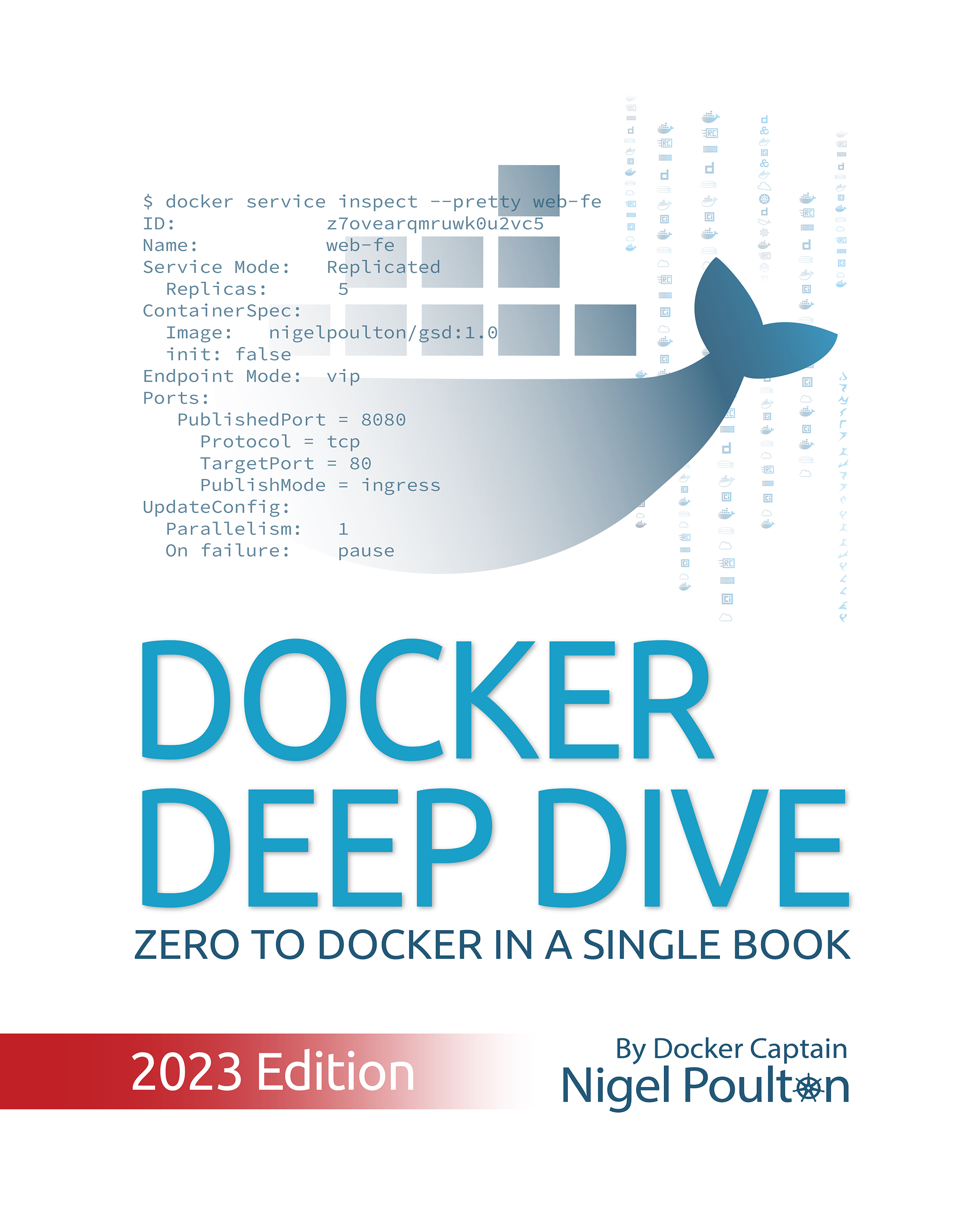Docker Deep Dive: A White Paper
1. Introduction
Docker has revolutionized the way we build, ship, and run applications. This open-source platform leverages containerization technology to package applications and their dependencies into portable, self-sufficient units. This white paper explores the core concepts, key features, and practical use cases of Docker, drawing insights from "Docker Deep Dive" by Nigel Poulton, published by Packt.
2. Core Concepts
- Containers: Lightweight, isolated environments that package an application and its dependencies (libraries, frameworks, system tools). They ensure consistent execution across different environments.
- Images: Read-only templates that serve as blueprints for creating containers. They contain the application code, libraries, configurations, and runtime environment.
- Docker Hub: A public registry for sharing and discovering Docker images. It hosts a vast collection of pre-built images from individuals and organizations.
- Docker Compose: A tool for defining and running multi-container Docker applications. It simplifies the orchestration of complex applications with multiple interconnected services.
3. Key Features
- Portability and Isolation: Containers run consistently across different environments (developer machines, testing servers, production environments), minimizing discrepancies and simplifying deployments.
- Efficiency: Containers share the host machine's kernel, reducing resource overhead compared to traditional virtual machines.
- Rapid Deployment: Docker enables fast and efficient application deployments, accelerating development cycles and time-to-market.
- Scalability: Containers can be easily scaled up or down to meet demand, providing flexibility and cost-effectiveness.
- Microservices Architecture: Docker is ideally suited for microservices architectures, where applications are broken down into smaller, independently deployable services.
4. Use Cases
- Application Development and Testing:
- Developers can easily share and reproduce development environments, ensuring consistency across the team.
- Rapid prototyping and testing of applications in isolated environments.
- Continuous Integration and Continuous Delivery (CI/CD):
- Automate the build, test, and deployment processes using Docker containers.
- Streamline the software delivery pipeline with increased efficiency and reliability.
- Microservices:
- Package and deploy individual microservices as independent containers.
- Improve scalability, maintainability, and fault isolation.
- Cloud Computing:
- Easily deploy and manage applications on cloud platforms like AWS, Azure, and Google Cloud.
- Leverage container orchestration tools like Kubernetes to manage and scale containerized applications in the cloud.
- Data Science and Machine Learning:
- Package and distribute machine learning models and their dependencies in containers.
- Ensure reproducibility and portability of machine learning pipelines.
5. Conclusion
Docker has emerged as a cornerstone of modern application development and deployment. By embracing containerization, organizations can achieve significant improvements in efficiency, agility, and scalability. "Docker Deep Dive" provides a comprehensive guide to mastering Docker concepts and techniques, enabling readers to effectively leverage this powerful technology.
References
- Poulton, Nigel. Docker Deep Dive. Packt Publishing, 2023.
- Docker Documentation: https://hub.docker.com/
Disclaimer: This white paper provides a general overview of Docker and its capabilities. For detailed information and implementation guidance, refer to the official Docker documentation and the "Docker Deep Dive" book.
This white paper provides a concise overview of Docker based on "Docker Deep Dive." Remember to adapt and expand it based on your specific requirements and the depth of information you wish to convey.



